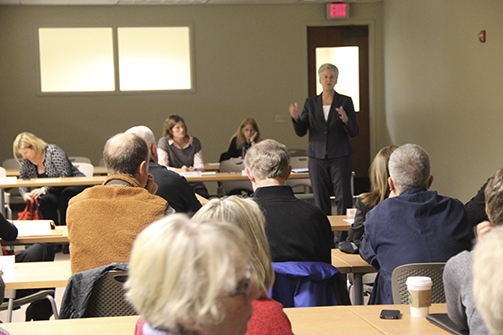In the final meeting of the Oregon State University Cascades Campus Expansion Advisory Committee last week, members of the committee and its task forces were recognized for their 17-month collaborative effort to advise the branch campus as it plans for a physical campus that meets the diverse needs of the surrounding community, and attracts and serves current and future students and faculty.
More than 100 individuals — including community members, neighborhood association representatives, architects, planners, healthcare professionals, non-profit leaders, business leaders, local and state government representatives, and educators — worked with CEAC and its task forces to develop a slate of far reaching recommendations.
“The recommendations the volunteers brought forth to CEAC are impressive,” said Becky Johnson, vice president of the branch campus, “and we are appreciative of their commitment to help create a campus that is a vital part of the community.”
Bend City Councilor Jodie Barram who co-chaired CEAC said, “The work of CEAC and the task force members will benefit Bend and Central Oregon for years to come.”
Johnson and Barram were joined by Matt Shinderman in recognizing community members. Shinderman, a senior instructor who leads the campus sustainability efforts, serves as co-chair of CEAC with Barram.
The outcome of the CEAC and task force efforts — a total of 115 recommendations plus guiding principles — address healthcare, housing, neighborhood livability, regional collaboration, sustainability and transportation. Ninety-two of the recommendations are now incorporated into planning and policy. The balance of recommendations is under consideration or will be revisited during a next phase of development.
At the CEAC meeting participants discussed a new structure for future public engagement involving the campus, City of Bend and community.
About OSU-Cascades
Located in Bend, Ore., Oregon State University’s branch campus features outstanding faculty in degree programs that reflect Central Oregon’s vibrant economy and abundant natural resources. Eighteen undergraduate majors, 30 minors and options, and three graduate programs include computer science, energy systems engineering, exercise and sport science, hospitality management, and tourism and outdoor leadership. The branch campus plans to expand to a four-year university beginning fall 2015.



